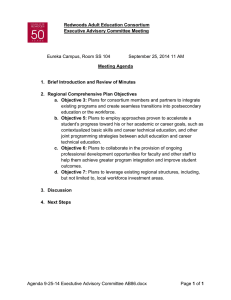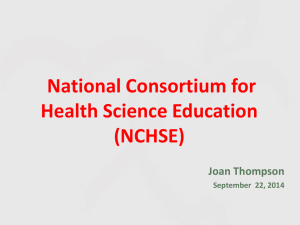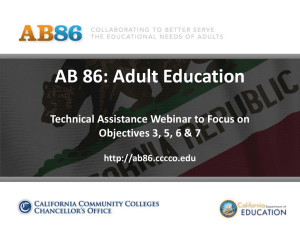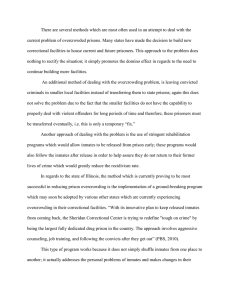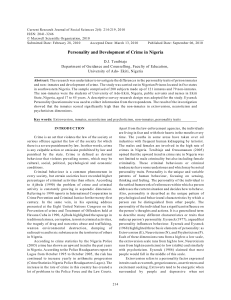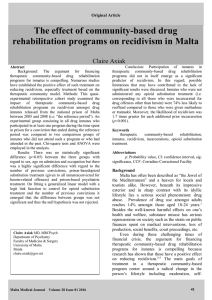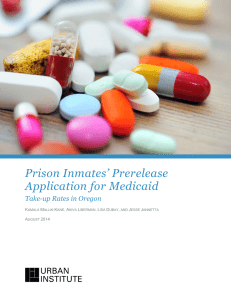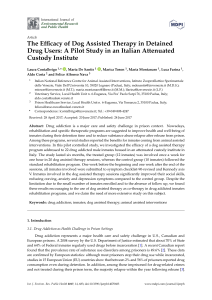Minutes and Actions of the Committee September 25, 2014
advertisement
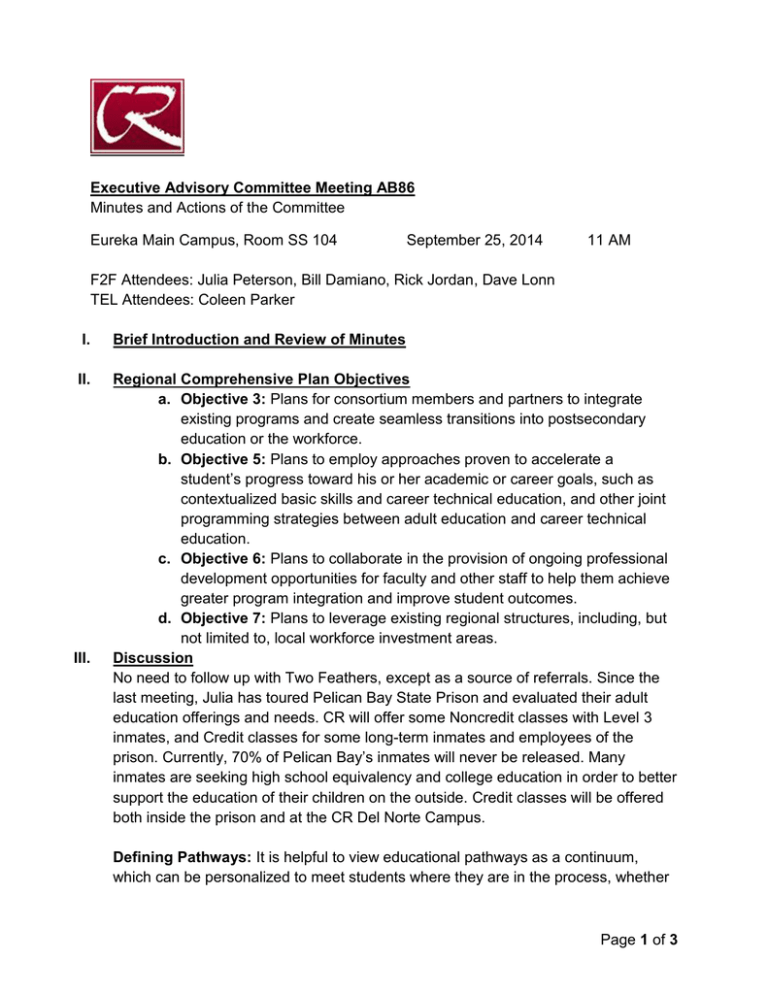
Executive Advisory Committee Meeting AB86 Minutes and Actions of the Committee Eureka Main Campus, Room SS 104 September 25, 2014 11 AM F2F Attendees: Julia Peterson, Bill Damiano, Rick Jordan, Dave Lonn TEL Attendees: Coleen Parker I. Brief Introduction and Review of Minutes II. Regional Comprehensive Plan Objectives a. Objective 3: Plans for consortium members and partners to integrate existing programs and create seamless transitions into postsecondary education or the workforce. b. Objective 5: Plans to employ approaches proven to accelerate a student’s progress toward his or her academic or career goals, such as contextualized basic skills and career technical education, and other joint programming strategies between adult education and career technical education. c. Objective 6: Plans to collaborate in the provision of ongoing professional development opportunities for faculty and other staff to help them achieve greater program integration and improve student outcomes. d. Objective 7: Plans to leverage existing regional structures, including, but not limited to, local workforce investment areas. Discussion No need to follow up with Two Feathers, except as a source of referrals. Since the last meeting, Julia has toured Pelican Bay State Prison and evaluated their adult education offerings and needs. CR will offer some Noncredit classes with Level 3 inmates, and Credit classes for some long-term inmates and employees of the prison. Currently, 70% of Pelican Bay’s inmates will never be released. Many inmates are seeking high school equivalency and college education in order to better support the education of their children on the outside. Credit classes will be offered both inside the prison and at the CR Del Norte Campus. III. Defining Pathways: It is helpful to view educational pathways as a continuum, which can be personalized to meet students where they are in the process, whether Page 1 of 3 it is the traditional K-12 to college to career path, or a modified path for returning or other non-traditional students. We envision a series of comprehensive parallel pathways, with multiple access points, for a full range of academic and career training interests. Service Coordination, Marketing, and Outreach: The Consortium will continue to rely on “natural” clearinghouses to provide basic support services for adult students entering or re-entering an educational pathway. Social services agencies such as DHHS and their affiliated providers, as well as local privately funded entities, are in place to offer food, clothing, housing, and transportation assistance, which may be supplemented with WIA grant funds, but are not the primary responsibility or focus of the Consortium entities. To better market the Consortium’s programs and potential, both to prospective students and to employers, a full time Business Liaison position may be created to focus on developing productive local relationships throughout our communities. This position could be considered a central, single point of contact, referral, and accountability, would serve as the primary point of entry for the many student pathways we are developing. We need funding for a sustainable, ongoing public relations and marketing effort, directed at local businesses and hubs of community activity, which will effectively reach and appeal to potential students, wherever they are on the continuum. A responsive phone line, a well-maintained website with links to specific programs and opportunities, electronic flyers, direct mail and email, text bursts, brochures, and community bulletin boards are some of the means by which the Business Liaison could connect with our communities. Marketing and outreach are key components of our effort to identify potential adult students and guide them to an appropriate point of entry on the path to a suitable career and a sustainable way of life. What happened to Adult Ed? A great deal of confusion exists around the current state of adult education services in this area. To address this quandary, we need to produce and distribute a one-page informational brochure to all providers of adult education and related services, explaining the changes which are taking place, and what to expect going forward. Discussion of Kuder Navigator: Implementing Kuder Navigator for higher education has many potential drawbacks, and will require further investigation. Discussion of Dual Enrollment for Credit Courses: Dual enrollment should replace articulated AP classes in high school. Partnering to share facilities for CTE, specifically Automotive Technology training, could better utilize existing infrastructure and provide more advanced instruction (and transferrable college credit) to high school students, bridging the gap to further postsecondary education. Page 2 of 3 Ongoing Professional Development: There is a significant need to fund professional training and development. Funding release time (Professional Learning Community Time) for teachers in local districts, at $120.00 per day, would enable them to train with college faculty and other Consortium entities during the work week. Funding for outside professional trainers would enhance the quality of training opportunities and provide exposure to expert educators and consultants. Some areas to explore: 1. Training in Adult Ed Marketing and Outreach 2. Adult Ed “Counselor Day” Training 3. Motivational Interview Training 4. A year-long monthly symposium series, launched from an intensive Summer Institute 5. Cross-training between Counseling and Corrections IV. Next Steps Future meeting dates: October 23 November 13 December 18 Page 3 of 3
